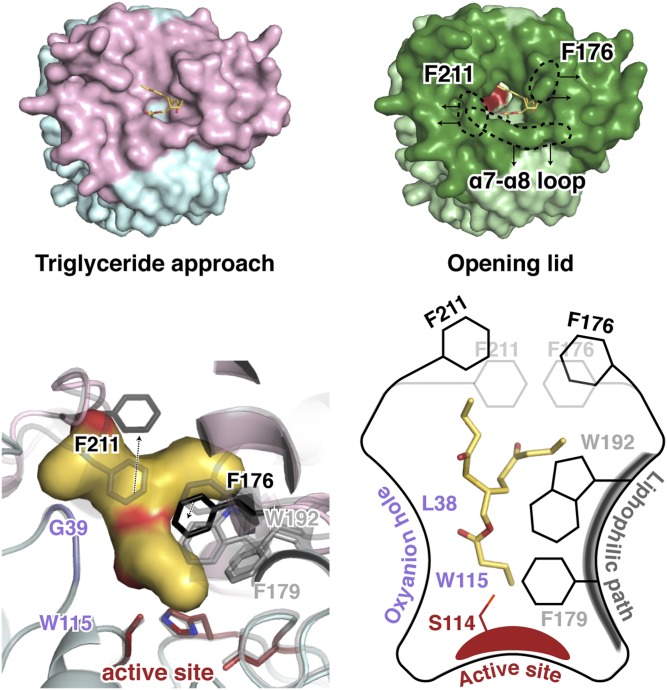Fig. 8.
Mode of action of CAlipase. In aqueous solution, the major form of lipase is the closed form, shielding the active site (colored red). However, when the lipase is exposed to a high level of lipid, the lid domain moves to reveal the active site. Two bulky side chain residues, Phe176 and Phe211, are responsible for the lid opening. The entry of the substrate is helped by the lipophilic path, followed by the catalytic reaction through the active site and oxyanion hole (colored red and purple, respectively).

